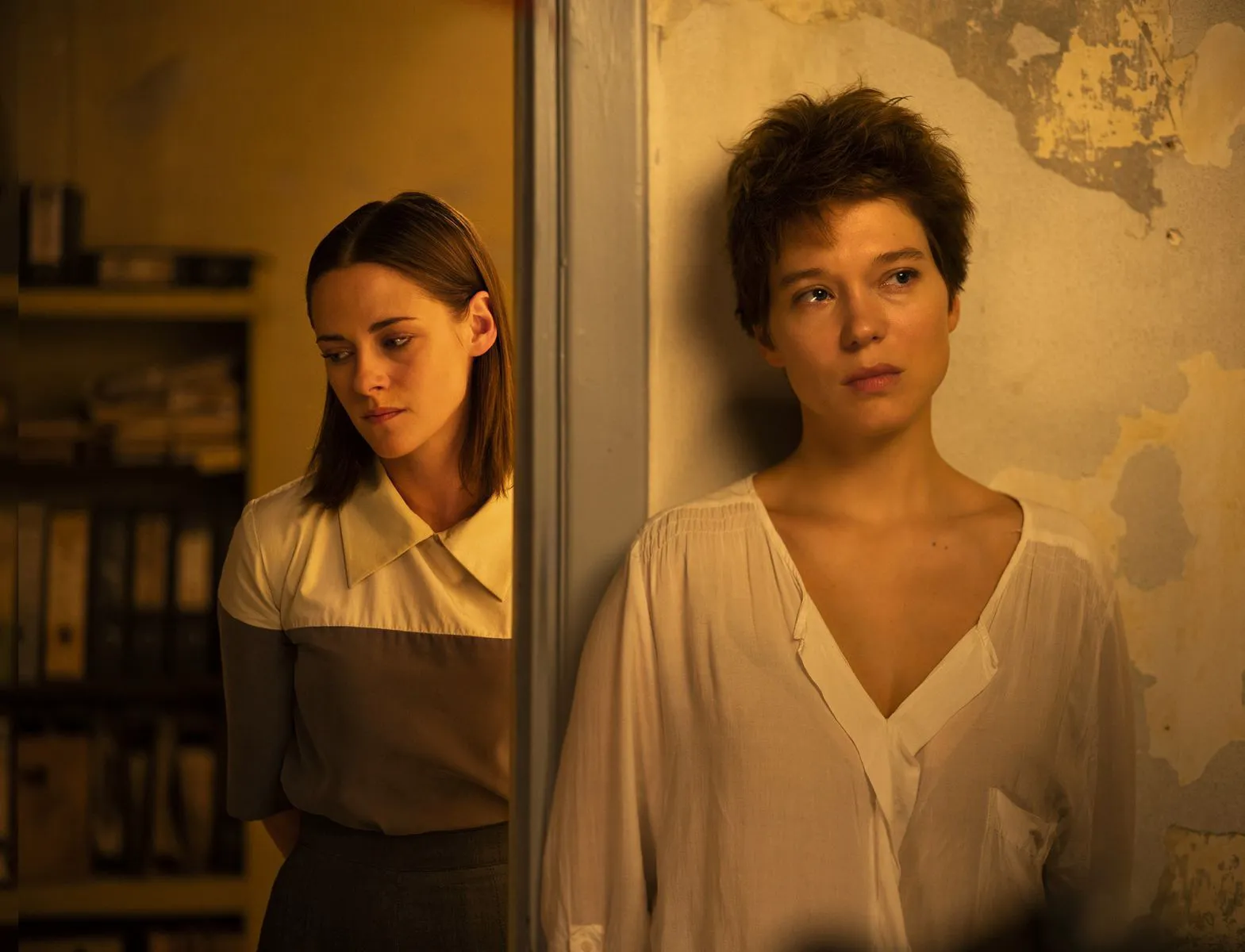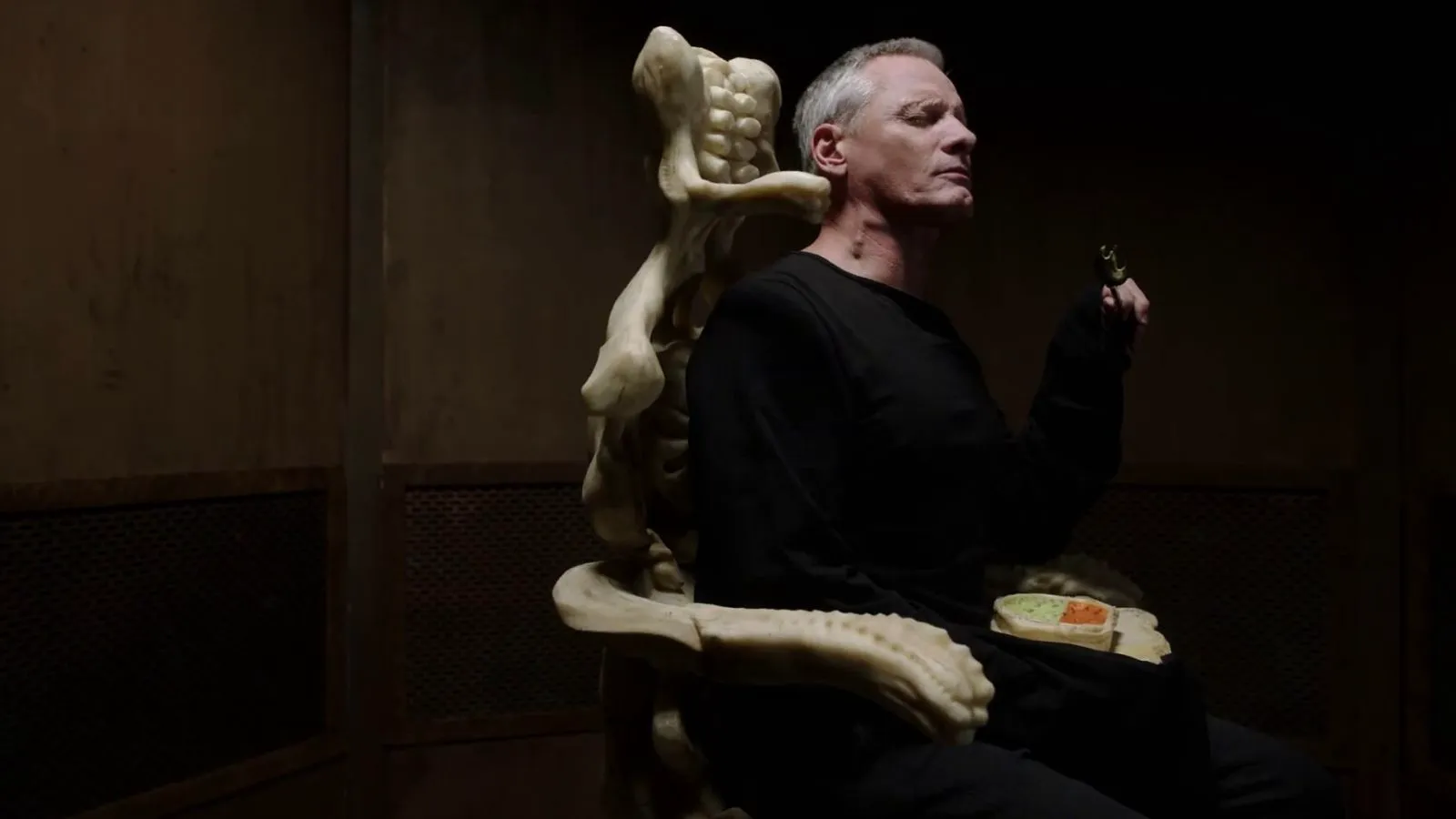Crimes of the Future: A Return to Cronenberg’s Body Horror Roots
“Crimes of the Future” had Cronenberg fans buzzing with anticipation, promising a return to the director’s body horror origins. In recent years, he had delved into psychological thrillers, leaving many craving the good old days of visceral, fleshy cinema. What we got was essentially a “greatest hits” compilation, revisiting themes from the past decades: the inevitability of technological progress, our integration with it, the mantra of “long live the new flesh,” and Viggo Mortensen being, well, Viggo Mortensen.
Cronenberg envisions a bleak future where humanity has lost touch with itself and the ability to feel pain. The earth is barren and lifeless, yet hosts vibrant gatherings like artistic performances exploring the limits of the human body. The protagonist, Saul Tenser (played by a perpetually melancholic Viggo Mortensen), is a performance artist who, with his partner Caprice (Léa Seydoux), cultivates new organs within his body, which she then publicly dissects for audiences to marvel at. Saul is clearly uncomfortable in his own skin, constantly cutting into his flesh in a search for meaning. And he’s not alone; everyone is modifying their bodies, not just for meaning, but for pleasure. As Timlin (Kristen Stewart), a worker at the National Organ Registry, bluntly puts it: “Surgery is the new sex.”

The Battle Against Biology
As society collectively grapples with its rapidly changing physiology, a terrified mother murders her child for consuming plastic. She sees him as a monster, while the child’s father believes he represents the “new” human. This sets the stage for a conflict between those who embrace the consumption of plastic and those who resist becoming “monsters.”

Shock Value and the Absence of iPhones
Cronenberg may have overestimated the initial shock value, predicting walkouts within the first 20 minutes. But for those who survived “eXistenZ,” this is familiar territory. The performative autopsy isn’t as repulsive as one might expect. The film is more perplexing than off-putting, leaving the viewer disoriented in the first act, unsure of the time period and wondering where the iPhones went in this future. Instead, we have new gadgets: chairs that aid digestion, “smart” beds for sleep, and sarcophagi for surgery, all tailored to the body’s evolving needs.

The Body as a Battleground
The language of body horror relies on physical sensations, but with physical pain largely absent, the focus shifts to the individual’s struggle against their own body. The “new flesh” struggles to adapt, and instead of allowing the body to evolve naturally, the characters torture it. This internal resistance to evolution is expressed through self-harm and a general discomfort within the environment. Saul’s body is in constant conflict with his mind, and no new organ can bring him harmony or peace. As in “eXistenZ,” society is divided into factions: those who aggressively push for progress and those who desperately cling to the past. History suggests the latter usually lose, but not without taking more people to the grave than necessary.
Embracing the Inevitable
Ultimately, “Crimes of the Future” urges us to surrender to the natural evolutionary process that we ourselves have accelerated through technological progress, rather than resisting it. Whether it’s microplastics in our blood or lab-grown organs, Cronenberg seems to say, “It is what it is, why worry?” The final scene, where a weary Saul Tenser yields to progress and finally finds peace, seems to release the tension in the viewer, suggesting we relax and accept the strange and frightening world as it is.